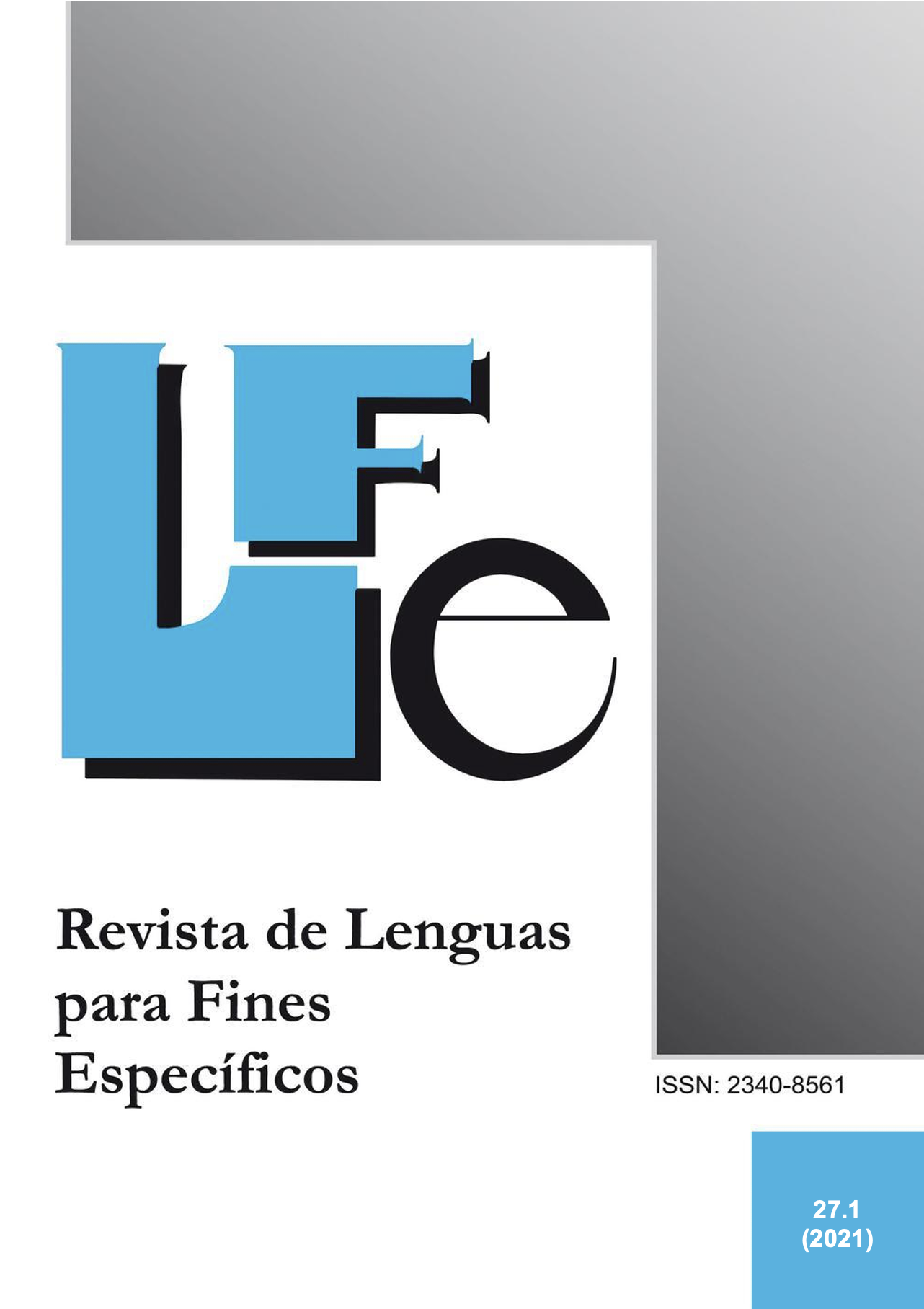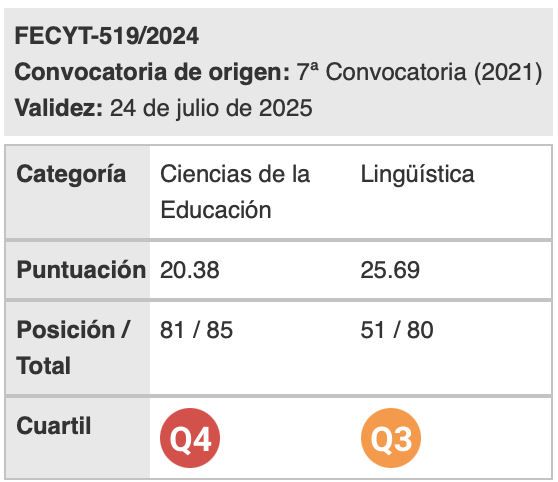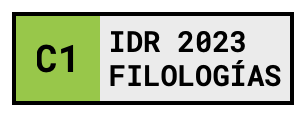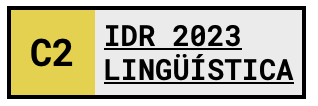El compromiso de la comunidad y el método "Learning by Teaching": Un proyecto piloto para abarcar el aprendizaje de lenguas extranjeras desde los primeros días
Palabras clave:
bilingüismo, participación en la comunidad, aprender-enseñando, educación infantil, monolinguismoResumen
El Proyecto Niños y Niñas Bilingües y Biculturales (NNBB), consolidado gracias a la colaboración del centro de educación infantil en la University Child Development Center y el Department of Modern Languages and Literatures, combinó los objetivos de aprendizaje de dos cursos de español avanzado con los beneficios de aprender una segunda lengua a temprana edad. Los estudiantes universitarios desarrollaron un programa de tres semanas de duración centrado en la enseñanza de vocabulario básico, geografía, y aspectos culturales de países de habla hispana para niños angloparlantes y monolingües. El objetivo de este estudio es comprender como el programa en la comunidad afectó a) las percepciones de los estudiantes universitarios sobre su participación en la misma comunidad; y b) las percepciones de los estudiantes universitarios sobre el aprendizaje de lenguas a una edad temprana. Los ensayos personales escritos por los estudiantes indicaron que este programa los incentivó a participar proactivamente en la comunidad y les ayudó a experimentar de primera mano la efectividad en la habilidad que poseen los jóvenes aprendices para adquirir una segunda lengua. Los padres de los niños en el programa indicaron en el cuestionario una disposición sistemática y consistente para implementar un programa de segundas lenguas en el currículo de preescolar en el centro.
Descargas
Citas
Balgopal, Meena M., and Montplaisir, L.M. 2011. “Meaning making: What reflective essays reveal about biology students’ conceptions about natural selection.” Instructional Science, 39 (2): 137–169.
Barreneche, G. I. & Flores, H.R. (2013). Integrated or isolated experiences? Considering the role of service-learning in the Spanish language curriculum. Hispania, 96 (2), 215-228.
Boss, J. A. (1994). The effect of community service work on the moral development on college students. Journal of Moral Education 23(2), 183-197.
Bringle, R. G., & Hatcher, J. A. (2009). Innovative practices in service-learning and curricular engagement. New Directions for Higher Education 147, 37-46.
Bringle, R. G., Phillips, M. A., & Hudson, M. (2004). The measure of service learning: Research scales to assess studenteExperiences. Washington, DC: American Psychological Association.
Boyer, E. (1987). College: The Undergraduate Experience in America. New York, NY. Harper and Row.
Brown, D. (2001). Pulling it together: A method for developing service-learning community partnerships based in critical pedagogy. Washington DC: Corporation for National Service.
Buitrago-Tinjacá, R. A., & Ayala-Contreras, R. (2008). Overcoming fear of speaking in English through meaningful activities: A Study with teenagers. Profile. Issues in Teachers' Professional Development 9.
Cha, K., & Goldenberg, C. (2015). The complex relationship between bilingual home language input and kindergarten children's Spanish and English oral proficiencies. American Psychological Association 107(4), 935-953.
Díaz-Rico, L. T. (2012). A course for teaching English learners. Boston, MA: Pearson.
Espinosa, L. M. (2015). Challenges and benefits of early bilingualism in the United States' context. Global Education Review 2(1), 40-53.
Falce-Robinson, J.A., & Strother, D. L. (2012). Language proficiency and civic engagement: The incorporation of meaningful service-learning projects in Spanish language courses. Interdisciplinary Humanities 29(3), 73-87.
Gaouette, N. (2006, August). Latinos boost U.S. population. Los Angeles Times.
García, O., & Sánchez, M. T. (2015). Transforming schools with emergent bilingual students: The CUNY-NYSIEB Project. In Impulse für die Migrationsgesellschaft: Bildung, Politik und Religion. (pp.80-95). Munster, New York: Waxmann.
Gardner, H. E. (2006). Multiple intelligences: New horizons in theory and practice. New York, NY: BasicBooks.
Graham, S. (2003). Learner strategies and advanced level listening comprehension. Language Learning Journal 28, 64-69.
Hardach, S. (2018) ¿Cuál es la major edad para aprender un idioma? BBC News Mundo.
Hellebrandt, Josef, and Ethel Jorge. (2013). “The Scholarship of Community Engagement: Advancing Partnerships in Spanish and Portuguese.” Hispania 96 (2), 203-214.
Hosein, A & Rao, N (2014) Students’ reflective essays as insights into student centered pedagogies within the undergraduate research methods curriculum. Teaching in Higher Education 22 (1), 109-125.
Hurford, J.R. (1991). The evolution of the critical period for language acquisition. Cognition 40, 159-201.
Hyltenstam, K., & Abrahamsson, N. (2003). Maturational constraints in SLA. In Catherine J. Doughty & Michael H. Long (Eds.), The Handbook of Second Language Acquisition (pp. 539-588). Oxford, UK: Blackwell Publishing.
King, B. & Newman, F. M. (2000). Will teacher-learning advance school goals?” PhiDelta Kappan, 81(8), 576-580.
King, K. & Fogle, L. (2006) “Raising bilingual children: Common parental concerns and current research.” CALdigest April: 1-2.
Klein, Gary, Brian Moon, and Robert R. Hoffman. (2006). Making Sense of Sensemaking 1: Alternative Perspectives. 70–73.
Konhert, K. (2010). Bilingual children with primary language impairment: Issues, evidence, and implications for clinical actions. Journal of Communication Disorders 43, no 6 (2010): 456-473.
Meador, D. (2019). Strategies for teachers: The power of preparation and planning. ThoughtCo. May. Retrieved from
Mitchell, T. D. (2008). Traditional vs. critical service learning: Engaging the literature to differentiate two models. Michigan Journal of Community Service Learning, (Spring), 50-65.
Muñoz, C. & Singleton, D. (2011). A Critical review of age-related research on L2 ultimate attainment. Language Teaching 44(1): 1-35.
National, Research Council. (2001). Investigating the influence of standards: A framework for research in mathematics, science, and technology education. Retrieved from https://www.nap.edu/catalog/10023/investigating-the-influence-of-standards-a-framework-for-research-in.
Osa-Melero, L. (2016). Community-engagement pedagogy through children’s literature: A tool to enhance L1 and L2 within culturally relevant contexts. Miríada Hispánica 13, 51-68.
Osa-Melero, L., Fernández, V., Quiñones (2019). Building bridges and creating pathways: A mixed methods study of community-engaged learning in foreign language pedagogy. Hispania 102(3):357-372.
Pinker S. (1994). The Language Instinct. New York, NY: William.
Tse, L. (2000). Student perceptions of foreign language study: A qualitative analysis of foreign language autobiographies.” The Modern Language Journal, 84 (1), 69-84.
Unsworth, S. (2016). Early child L2 acquisition: Age or input effects? Neither, or both? Journal of Child Language, 43(3), 608-634.
Vera, B. (2011). Beliefs, concerns, and methods of parents raising children bilingually: A study of Hispanic Iowa mothers attempting to maintain heritage language in their children. (Master’s Thesis). University of Northern Iowa, Iowa.
Vygotsky, L. S. (1962). Thought and language. Cambridge, MA: MIT Press.
Descargas
Publicado
Cómo citar
Número
Sección
Licencia
Aquellos autores/as que tengan publicaciones con esta revista, aceptan los términos siguientes:
- Los autores/as conservarán sus derechos de autor y garantizarán a la revista el derecho de primera publicación de su obra, el cuál estará simultáneamente sujeto a la Licencia de reconocimiento de Creative Commons que permite a terceros compartir la obra siempre que se indique su autor y su primera publicación esta revista.
- Los autores/as podrán adoptar otros acuerdos de licencia no exclusiva de distribución de la versión de la obra publicada (p. ej.: depositarla en un archivo telemático institucional o publicarla en un volumen monográfico) siempre que se indique la publicación inicial en esta revista.
- Se permite y recomienda a los autores/as difundir su obra a través de Internet (p. ej.: en archivos telemáticos institucionales o en su página web) antes y durante el proceso de envío, lo cual puede producir intercambios interesantes y aumentar las citas de la obra publicada. (Véase El efecto del acceso abierto).

Revista de Lenguas para fines específicos is licensed under a Creative Commons Reconocimiento-NoComercial-SinObraDerivada 4.0 Internacional License.























